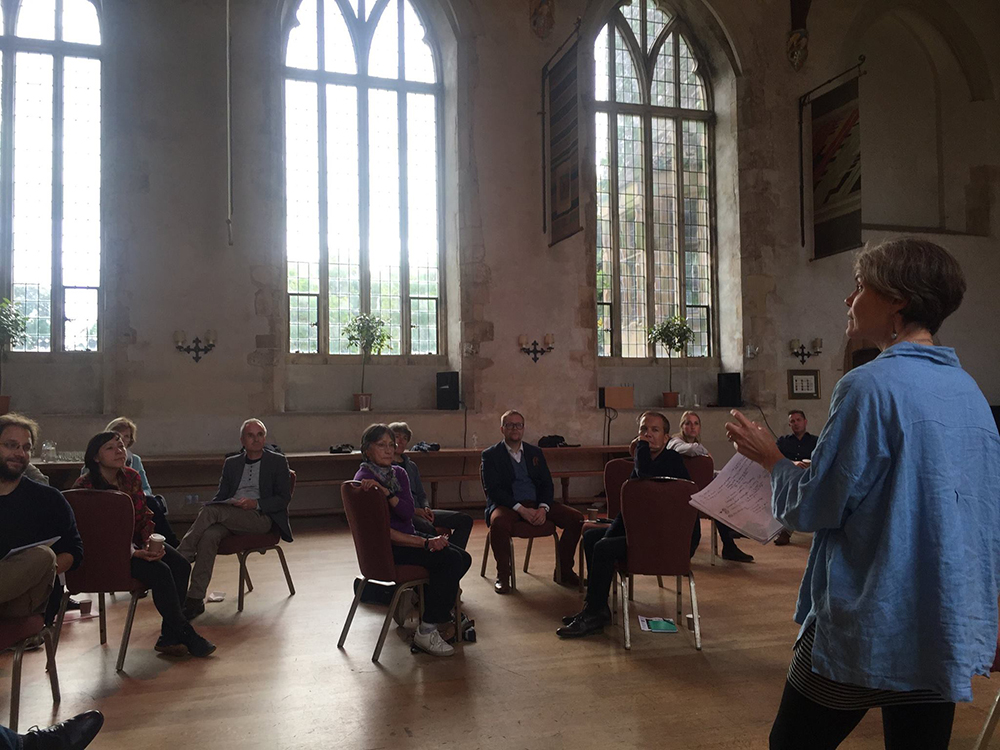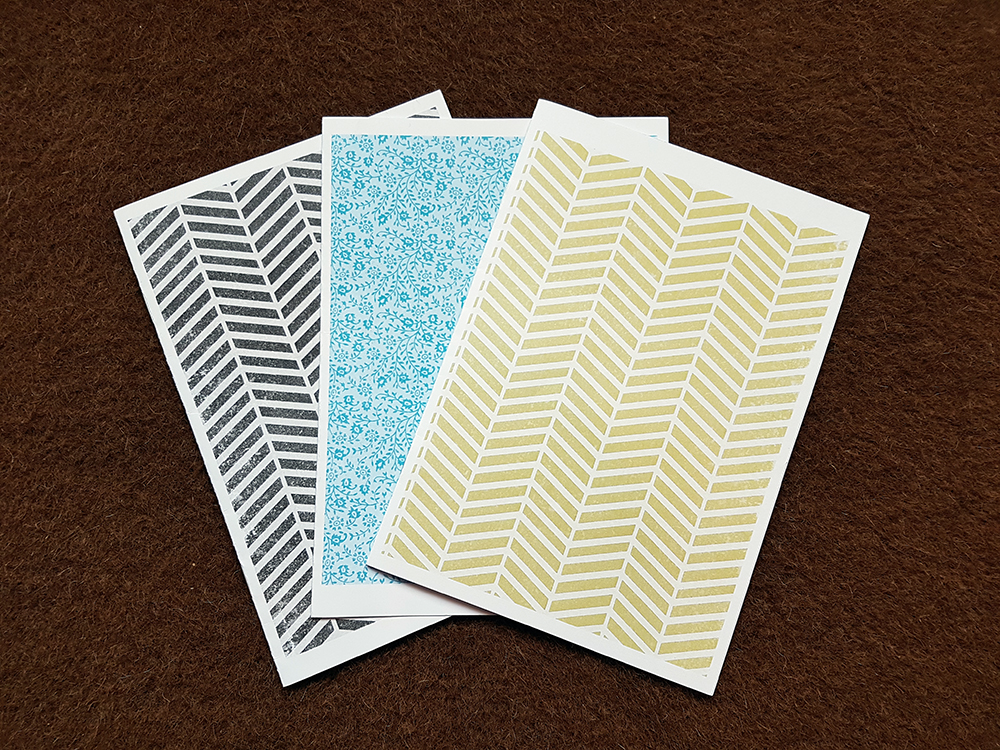
To start off the new semester I had the wonderful opportunity to attend the 16th Seminar of the Innovative Conservatoire which took place at Dartington Hall in Totnes, UK, from October 8th to 11th. The subject of this Seminar was Artists in Society: „listening“ as a core artistic and professional skill, and its role in evolving purpose and practice. It was the subject of the seminar, which is very apropos for the current growth and change at the mdw, society in general, as well as for my own work, plus the fact that one day of the seminar would be led by the founder of CRP or Critical Response Process, Liz Lerman herself, that compelled me to put in the effort to find the time and funding to go to Dartington and participate.
In the course of the seminar the participants and facilitators reflected on the concept of listening deeply and of responding as being an integral part of listening, whether we are in the role of musician, performer, teacher or artist in society. However, it was as much the method of conveying the subject matter as the information itself that led to transformative learning at this Seminar! In turn, it is as much through looking at the way I learned and reflected on the concepts of listening and artists in society as through looking at the concepts themselves that will transform my own music-making, teaching and participation in the mdw’s working groups.
It can be challenging to express in words a learning experience that was so alive and dynamic. There simply was no passive listening and receiving of information involved in this seminar. Ideas were conveyed in a fluid way, with the lines between facilitators and participants at times completely blurred. It was empowering to realize that we were all on a path of discovery together. This energy of working together was so compelling that at times I literally forgot who was in the role of participant or facilitator. This method unleashes a powerful creative energy.
It’s easy to feel lost in so many intangible ideas, but the little gems we received at the end of each day seem able to contain some of the energy quite well.

These little „recipe“ booklets, one for each day, present the sessions we participated in to achieve our insights. The parameters of these sessions had been created in advance by the facilitators in a collaborative, participatory way, thus making them alive bits of artwork themselves. In them, we each took a turn at different roles, sometimes presenting ideas, questions and information, offering a gift in a sense, sometimes reflecting on or receiving that gift and then responding or giving something back. In creating the structure of the sessions, the facilitators had experimented with the way we usually respond, playing with the boundaries and methods of response, with often very surprising results. It was this opening up of the typical roles of presenting, listening and responding that led to new and transformative discoveries for all, participants and facilitators alike.
The Birdcall moment, an activity outside of the regular sessions, illustrates this perfectly. A particularly spunky group of artists, Innovative Conservatoire facilitators and participants alike, went out into the town of Totnes to share birdcalls. That’s right, I said, „share birdcalls“. We took the smallest, simplest of objects—the birdcall device was nothing more than a simple screw in a tiny cylinder of wood, but somehow this little object produced very diverse bird sounds depending on the speed and force with which you turned it. Sometimes it sounded squeaky, screeching and horrible and sometimes it sounded gentle, tender and refined. Frankly, I think the sound it produced had a lot to do with the feelings of the one turning it!
The lesson I learned, or moreover experienced, is: being an artist as giving a gift to society and also giving this gift as an art form in and of itself. This itsy-bitsy sound, presented to just anyone on the street who was willing to take a moment to stop and pay attention, inspired more diverse performances and interpretations as well as more diverse reactions and receptions from the public, than I ever would have believed possible. With this little tool a spontaneous Performance Art was created on the spot that was fully integrated in the moment, the people and the place. This performance of spontaneous stopping, listening and responding created memories that will last with many participants (artists and society alike) for a very long time. The exercise brought life to art and art to life while demonstrating perfectly both the concept of responding as an inherent part of listening as well as the concept of the fluidity between artists & society, performer & audience, music maker & music listener and, to put it in most simple terms, gift-givers & recipients. Reflecting on these impressions and integrating them into my accompanying practice will occupy my work for a long time to come.
And again, it was the artistic experience as a whole that planted the seeds of this transformation in me. If someone had simply told me these things and explained why they worked, it might have been interesting, but it never would have changed me. The fact that we were all, facilitators and participants as a group, experimenting together, not knowing the outcome ahead of time, reacting and acting on our audience, made this an alive, shared experience with the power for lasting change of perception for all involved.
And to think I almost didn’t join in on the Birdcall moment! It was just an offer outside of the regular sessions: whoever wished could come after the final working session of the day to share birdcalls in Totnes. It sounded perfectly off-the-wall. I considered staying behind and resting, as I already felt filled with all my impressions from the seminar. In the end, what I found irresistible was the chance to interact with this place. I had already spent time being a passive visitor, guest and spectator in this town – what a unique opportunity to interact with the town, to offer them something. Little did I know how much I’d be getting back!
And this experience represents perfectly for me the essence of what I brought home from this seminar, an essence of listening & responding, artists & society, teacher & student and so on. These interactions are at their best when they happen on one level, rather than top to bottom. As Liz Lerman explained and led us to experience on her seminar day, the truly interesting work takes place when we are, as she puts it, „Hiking the horizontal“. Not limiting ourselves to acting as performers to a purely passive audience, teachers inputting information into passive students, or speakers letting their words fall onto passive listeners, but tipping this flow of information onto its side so we are all active participants in the process, moving about on one level. The authentically transformative work happens in all of these constellations when everyone functions, not from top to bottom, but from side-to-side, along one horizontal, giving – receiving – and giving back again.
The Innovative Conservatoire is coming to the mdw in February! From February 12 to 13, 2018, the mdw’s Zentrum für Weiterbildung will be hosting a 2-day workshop with 2 facilitators from the Innovative Conservatoire, Dinah Stabb and Gerda van Zelm. The workshop is entitled: Teaching and Learning: Exploring the connections between teachers as learners and learners as teachers. Following this workshop, on the 14th of February, the ZfW is also hosting the ICONgo 10 Seminar. The subject of this Seminar is: Student-centred teaching and learning – „Catching the train again“.
For more information about the Innovative Conservatoire workshop and seminar at the mdw, please contact the Zentrum für Weiterbildung:

